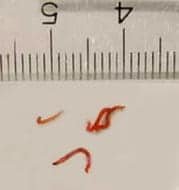
Imagine the life of a bloodworm as a journey through different worlds. From tiny larvae to fully grown worms, each stage is like turning a page in a captivating story. This article will break down the life cycle of the bloodworm into easy-to-understand stages, exploring their behaviors and the environments they thrive in. So, sit back, maybe grab a drink, and let’s dive into the world of these intriguing creatures.
What Are Bloodworms?
Before we jump into their life cycle, let’s clarify what bloodworms really are. Bloodworms are the larvae of chironomid midges, a type of fly that is commonly found in freshwater environments. They get their name from the striking red color, which comes from a pigment called hemoglobin. This pigment helps them survive in low-oxygen waters, making them quite adaptable.
Bloodworms are typically found in muddy bottoms of ponds, lakes, and slow-moving streams. They thrive in dark, oxygen-poor environments—think of those murky waters where you might not want to dip your toes! Their unique habitat and physiology make them a vital part of the aquatic food chain, serving as a primary food source for many fish and other wildlife.
Stage 1: Eggs
The life cycle of the bloodworm starts with the *egg stage*. After mating, female chironomids lay thousands of tiny eggs in water. These eggs are usually sticky and can attach to vegetation or debris on the water’s surface. It’s kind of like leaving behind little packages of potential!
After about a week (depending on temperature and water conditions), the eggs hatch into larvae. You might be wondering, how do these tiny larvae survive in their environment? The eggs must be in the right conditions—stable temperatures and oxygen levels are crucial for healthy development.
Stage 2: Larvae
Once hatched, the bloodworm enters the *larval stage*. This is where they spend most of their lives—growing, eating, and developing. The larvae can be quite long, measuring around 1 to 2 inches. They have a distinct, segmented body that helps them move through the mud and water easily.
During this stage, bloodworms are active feeders. They consume organic matter, bacteria, and even detritus from the environment. Imagine them as nature’s little recyclers, constantly munching away to help keep their habitat clean. Their bright red color acts as a warning sign to predators, indicating they’re not the easiest snack to catch—pretty smart, right?
Stage 3: Pupa
After several weeks of feeding and growing, the larvae enter the *pupal stage*. This is a fascinating part of their life cycle. The bloodworm now transforms into a pupa, a stage that looks quite different from its previous form. Inside the protective casing of the pupa, the bloodworm undergoes significant changes, much like a caterpillar turning into a butterfly.
This stage can last anywhere from a few days to a couple of weeks, depending on environmental conditions. During this time, the pupa is less active but is still susceptible to predators. It’s kind of like being in a cozy cocoon, waiting for the right moment to burst forth!
Stage 4: Adult Midge
Once the changes are complete, the bloodworm emerges from its pupal casing as an *adult midge*. This is where the life cycle full circle completes, as the adult midge can now reproduce and start the cycle all over again. Adult midges typically have a short lifespan, often living just a few days to a couple of weeks.
During their short life, adult midges are not only responsible for mating but also contribute to the ecosystem by serving as food for birds and other insects. They tend to swarm in large numbers, especially during warm evenings, creating a mesmerizing spectacle that many enjoy watching.
Behavior of Bloodworms Throughout Their Life Cycle
Throughout each stage of their life cycle, bloodworms exhibit different behaviors that help them survive and thrive. During the larval stage, their main focus is on feeding and growing. They have adapted to be efficient at finding food in their muddy habitats, often using their movement to stir up the substrate and increase their chances of catching tiny food particles.
When they transition to the pupal stage, their activity decreases significantly. They become less visible and more vulnerable, tucking away in the mud. However, when in danger, they can use a rapid wriggling motion to escape predators, showcasing their survival instincts.
Once they reach adulthood, midges rely on their ability to swarm and mate. Swarming behavior is essential for reproduction, allowing males and females to find each other in the vastness of their environment. It’s during this time that you might see them dancing in the air, creating beautiful patterns against the sunset.
Why The Bloodworm Life Cycle Matters
So, why should we care about the life cycle of the bloodworm? Understanding these stages is important for several reasons. For anglers, knowing when and how bloodworms hatch can enhance fishing success. Many fish species are drawn to their vibrant color and movement, making them an effective bait.
Moreover, bloodworms are a critical part of their ecosystem. They help break down organic matter and serve as a food source for various species. This means that a healthy bloodworm population can support a thriving aquatic environment. By understanding their life cycle, we can promote conservation efforts to protect their habitats and ensure their continued existence.
The life cycle of the bloodworm is a fascinating journey from tiny egg to fully-grown midge. Each stage tells a story of adaptation, survival, and the importance of these creatures in our ecosystems. Whether you’re an avid angler or just curious about nature, knowing about the bloodworm’s life cycle enriches your understanding of the underwater world.
Next time you’re by the water or out fishing, remember these little red wonders and the role they play in the natural cycle of life. From their humble beginnings to their fluttering adulthood, bloodworms are more than just bait—they’re a key part of the aquatic dance of life!
